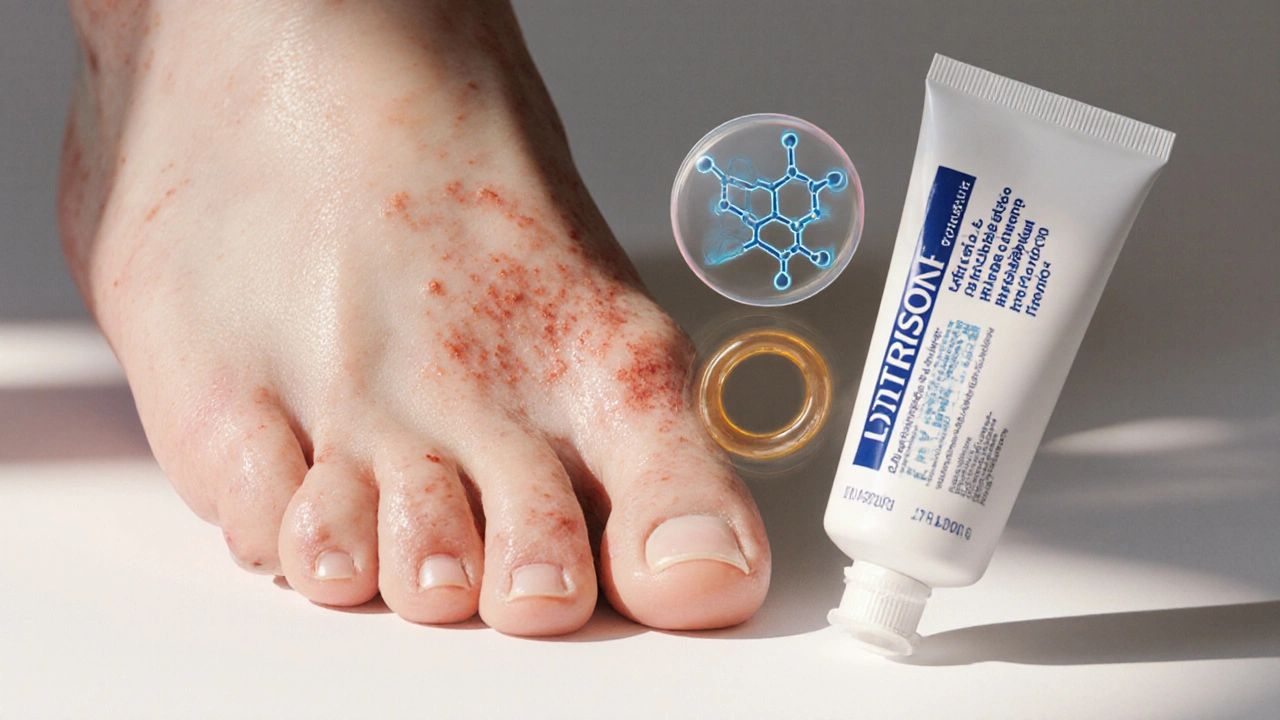Lotrisone: Uses, Safety, and How It Stacks Up
When working with Lotrisone, a prescription cream that blends the antifungal clotrimazole with the corticosteroid betamethasone. Also known as clotrimazole/betamethasone cream, it targets fungal skin infections while reducing inflammation in one step.
Lotrisone encompasses two separate agents. The first, clotrimazole, shuts down the growth of dermatophytes, yeasts, and molds by disrupting fungal cell membranes, which makes it a broad‑spectrum antifungal. The second, betamethasone, is a potent topical steroid that dampens the immune response, easing redness, itching, and swelling. Together they create a combo that treats both the cause (the fungus) and the symptom (the inflammation). This dual action is why doctors often pick Lotrisone for ringworm, athlete’s foot, and yeast infections that are stubborn or inflamed.
Because it merges an antifungal and a steroid, Lotrisone requires careful use. Apply a thin layer to clean, dry skin once or twice daily, and wash your hands afterward. Avoid covering the area with airtight dressings unless your doctor says so—the steroid can be absorbed more quickly under occlusion, raising the risk of side effects like skin thinning. Common complaints include mild burning or itching at the application site; these usually fade after a few days. If you notice worsening redness, blistering, or signs of a secondary infection, stop using the cream and call your provider. Lotrisone is not for eyes, mouth, or broken skin, and it should not be used on large body areas for longer than two weeks without medical supervision.
How Lotrisone Compares to Other Topical Options
When you ask, "Is Lotrisone better than a plain antifungal?" the answer depends on the problem. A single‑agent antifungal like clotrimazole alone works well for uncomplicated infections but does nothing for the itching and swelling that often accompany them. A standalone steroid such as betamethasone eases inflammation but leaves the fungus untouched, leading to recurrent infection. Lotrisone merges both benefits, so it’s usually the go‑to for inflamed fungal patches. However, for mild cases or for patients who need to limit steroid exposure—like children, diabetics, or people with thin skin—doctors may start with clotrimazole alone.
Other combination creams exist, such as diflucan‑betamethasone mixes, but Lotrisone remains popular because clotrimazole is well‑studied, inexpensive, and has a low resistance profile. If you’re looking for over‑the‑counter alternatives, there are steroid‑free antifungal creams (e.g., terbinafine) which are safe for long‑term use but won’t curb the immediate rash. In short, the semantic triple "Lotrisone requires both antifungal and anti‑inflammatory action" helps you decide when to choose it over single‑agent products.
Now that you know what Lotrisone is, how it works, and where it fits among other creams, you can make an informed choice. Below you’ll find a curated list of articles that dive deeper into dosage tips, side‑effect management, and direct comparisons with other skin‑care medications. Each post is aimed at giving you clear, actionable advice you can use right away.

